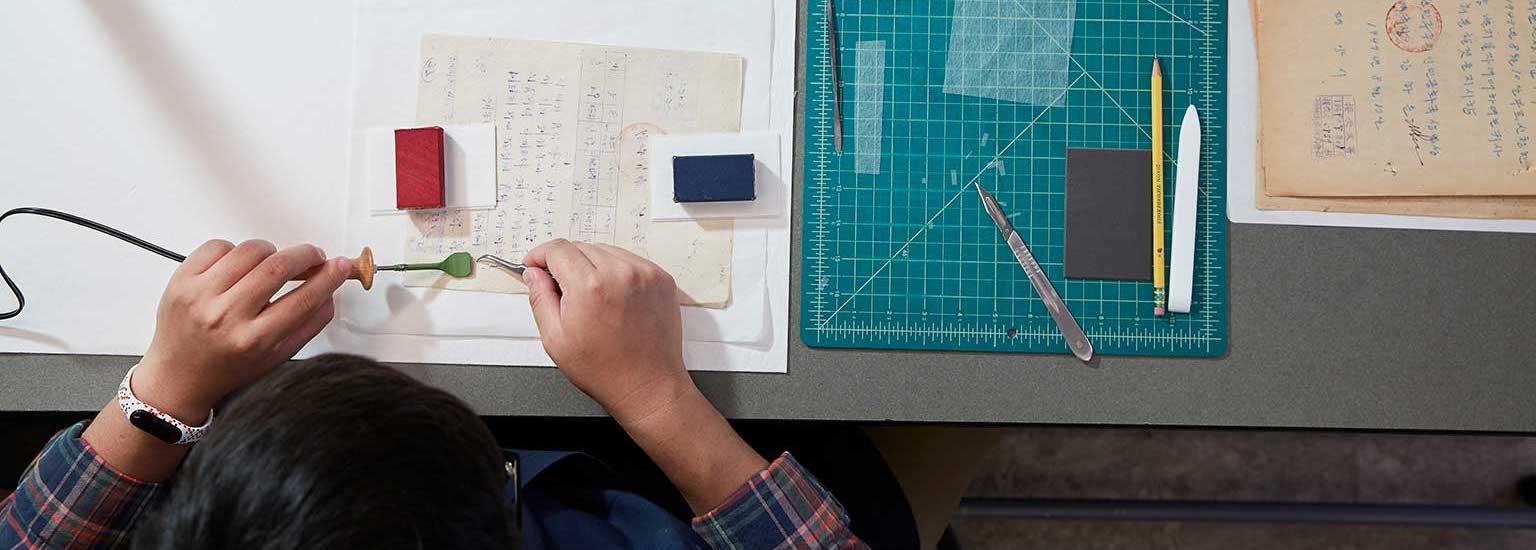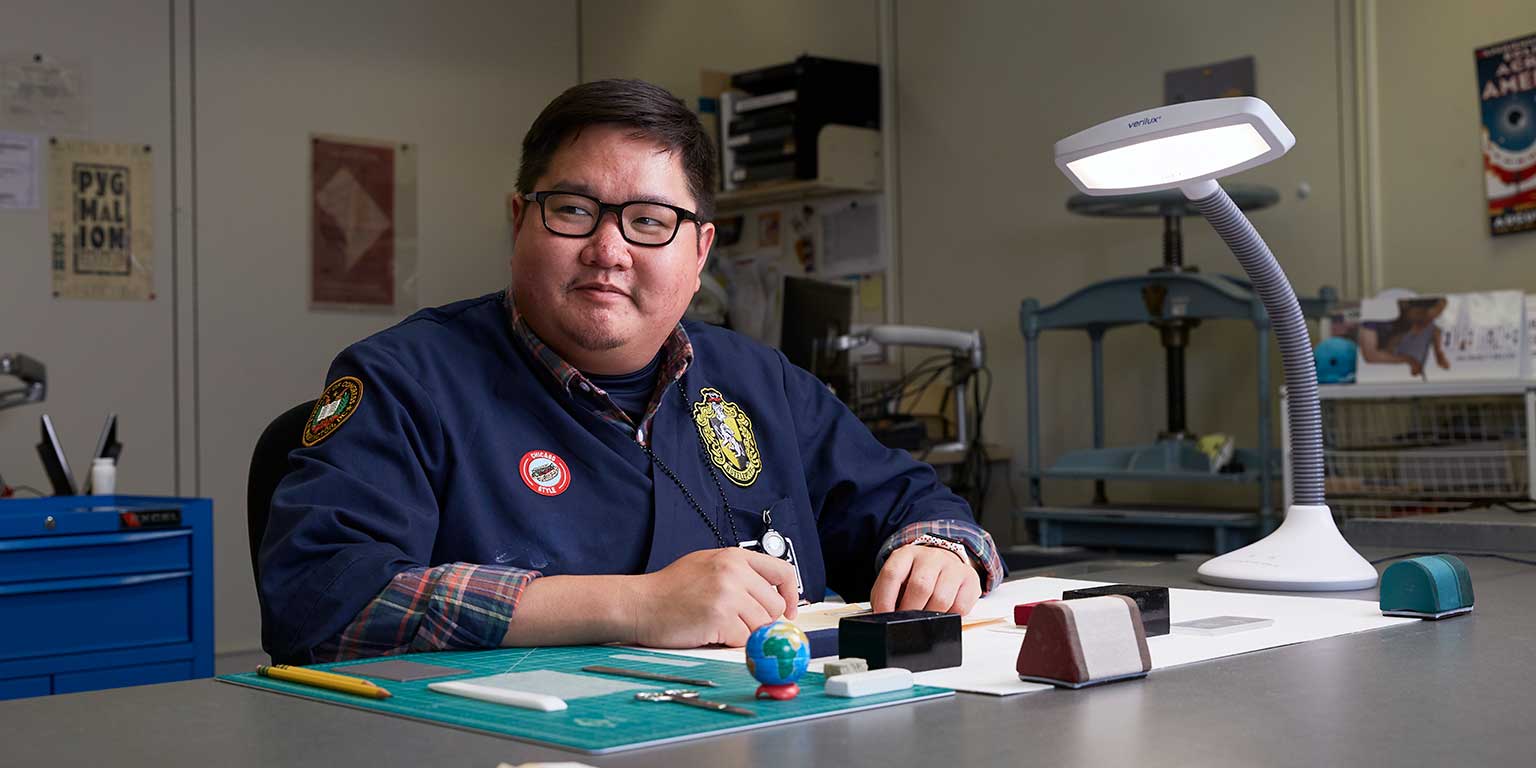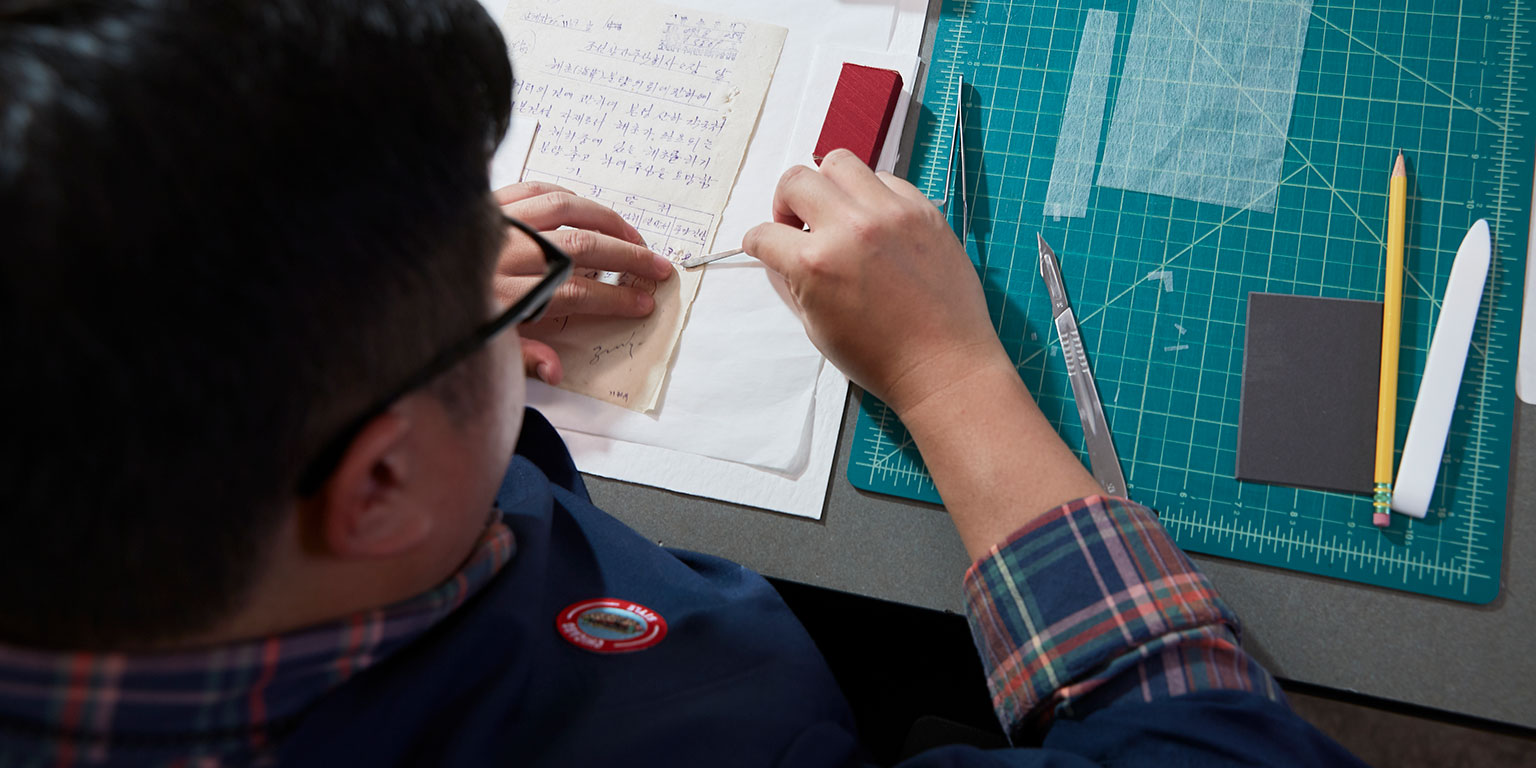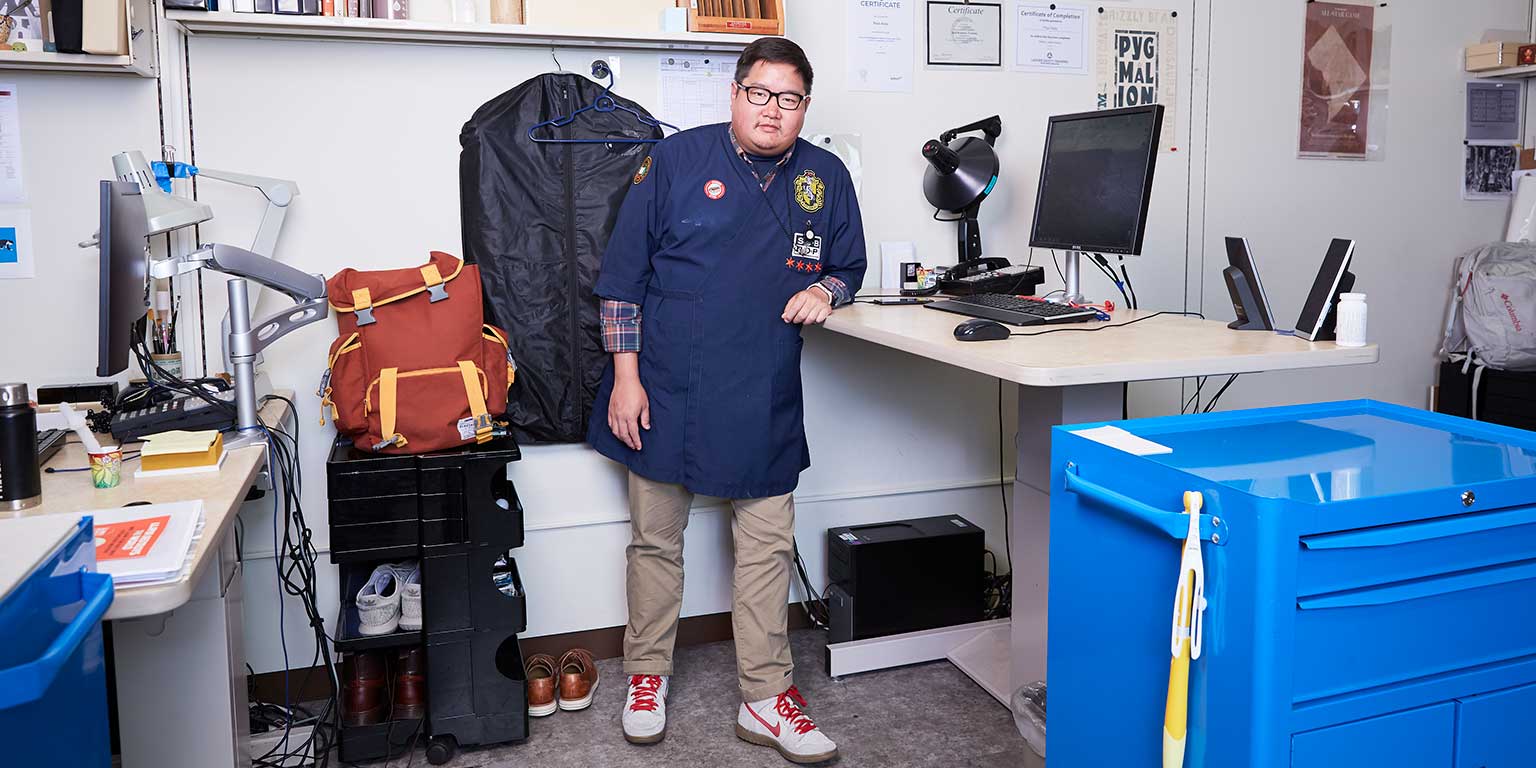By Katie Moulton | Summer 2019
Photography by Noah Willman
On a gray day in early December, I set off on foot from Washington D.C.’s Union Station. As I hurry down the wide boulevards, passing massive limestone buildings — fortresses of culture, government, and history — I lengthen my strides to match the scale of the nation’s capital. Plus, I’m running late for an appointment, and these city blocks are enormous.
Paul Kwan Asta (M.F.A. ’16, Creative Writing) understands; he makes this same commute by train and foot to his job as a conservation library technician at the Library of Congress. In the library’s marbled central hall, gazing up at the European-inspired murals and mosaics, he tells me the magnitude still strikes awe in him. He points to a corner of the ceiling. “That’s the Poet Laureate’s office,” he says, breaking into incredulous laughter.
It’s that same daily astonishment — discovery afforded by a sense of being slightly out of place — that’s pushed Paul along his surprising path: from working at Target to studying poetry at IU, then in Ireland, and now restoring precious artifacts at the largest library in the world.
Born in Korea and raised by adoptive parents in the Chicago suburbs, Paul has always been drawn to both the mechanisms of language and to working with his hands. Growing up as a Midwestern millennial, he played video games and guitar, saving up for fresh sneakers and tickets to pop-punk concerts. While an undergrad at University of Illinois Urbana-Champaign, he worked as a library cataloger, roaming the stacks with long electric-blue hair. And he wrote, bringing together the self-aware humor of the Internet and consumer culture touchstones with urgent interior questions.






